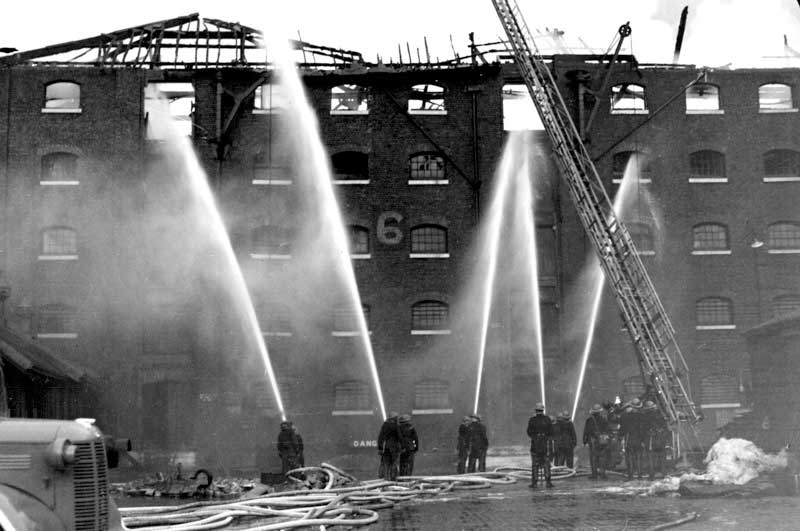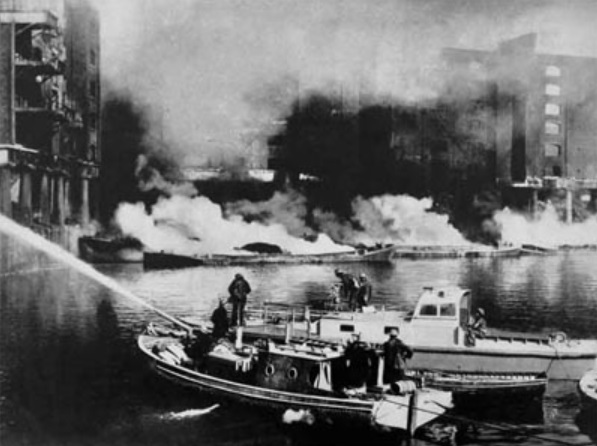
As the political climate intensified in Europe during the late 1930s, an Act of Parliament was passed to authorise the formation of a voluntary fire service. The Auxiliary Fire Service (AFS) formed in January 1938 and fire stations were set up in schools, garages and factories.
A recruitment drive was launched, with over 28,000 firefighters needed to support the Brigade's 2,500 officers and firefighters. However, as most young men had joined the army, the AFS welcomed those too old or too young to go to war. It also marked the first time women joined the Brigade.
Though women did train, they didn't actually fight fires in the Second World War. They became fire watchers and drivers, and managed the communications networks. A rank system for women of the fire service was developed during the war to recognise their service and bravery – many were awarded for their remarkable achievements.
Jane Stern, Museum Curator
The firefighters of the AFS were issued with one basic uniform: a steel helmet, rubber boots, trousers and waterproof leggings – although shortages saw some stuck with just Post Office uniforms. The most common piece of equipment used by the AFS was the trailer pump, which was originally towed by taxis.

The first targeted air raid on London took place on 7 September 1940 and marked the beginning of the Blitz – a period when London was bombed for 57 nights in a row. For many AFS members, this was their first experience of firefighting.
Most of the bombings happened at night, meaning firefighters spent long hours extinguishing fires or dealing with explosions. Bombs on warehouses were especially dangerous due to highly flammable products such as alcohol and paint.
Bombings often occurring while the River Thames was at low tide meaning access to water was made even more difficult. Vehicles became vital in transporting water around the city. Steel frames were fitted to lorries to enable them to carry up to 1,000 gallons of water. Meanwhile, to reduce the workload of the fire service, small fires were dealt with by 'street fire parties' – civilians who were given and taught to use stirrup pumps.
The public's opinion of the fire service changed significantly as a result of the Blitz. During the 'phoney war', firefighters had been thought of as 'army dodgers'. But, in 1940 this attitude changed – our firefighters became known as 'the heroes with grimy faces'.
...were a grand lot and their work must never be forgotten.

During the Second World War there were nine fire boat stations, three pre-war fireboats in service, as well as extra emergency fireboats and barges.
These boats played a vital role in fighting fires along the banks of the Thames, and were staffed by both firefighters and volunteers.

The Brigade's most famous boat is the Massey Shaw, named after the first Chief Officer of the Metropolitan Fire Brigade.
She was built in 1935 and played an important role in the evacuation of Dunkirk. Crewed by a team of volunteer firefighters, she formed part of the flotilla of small vessels which evacuated British troops from the beaches. She made three brave trips and rescued over 500 troops.
During the rescue mission, the flag from the vessel was used to bandage a soldier's injured arm – it's still in our museum's collection today.
To provide a unified service throughout the country, the National Fire Service (NFS) took control on 18 August 1941 when all the auxiliary fire services reorganised to form a new national service.
After the war, the NFS continued while discussion were held over the structure of Britain's fire services before eventually being disbanded in 1948.